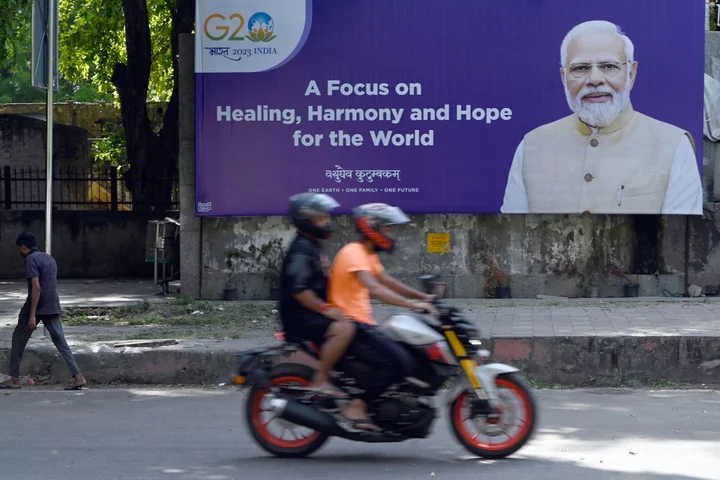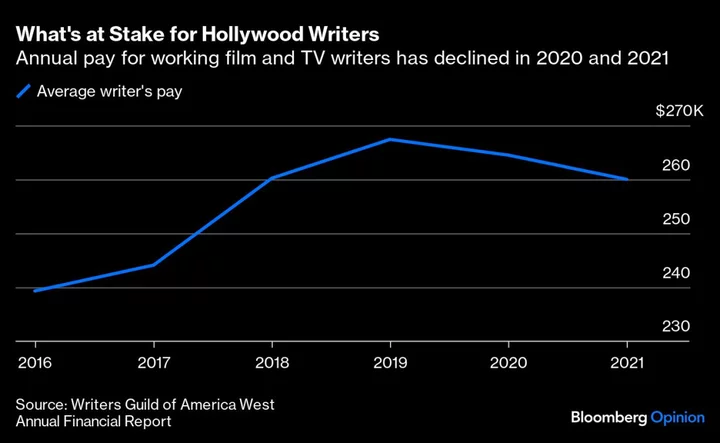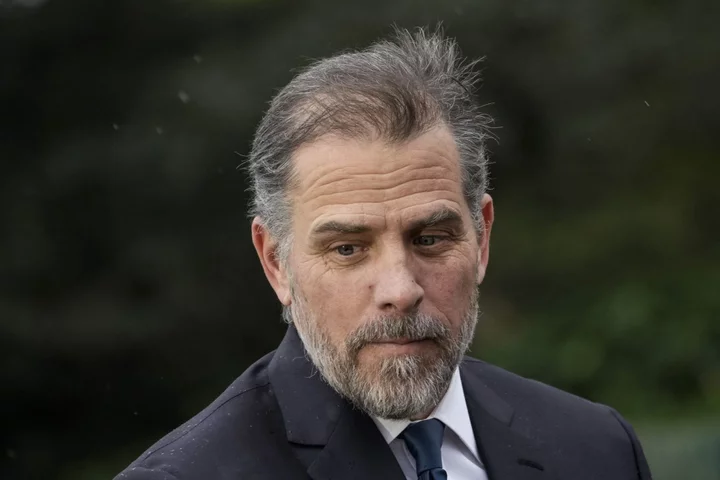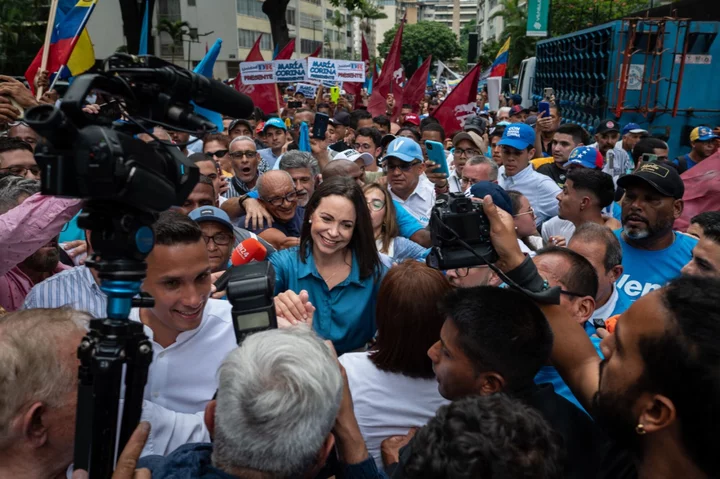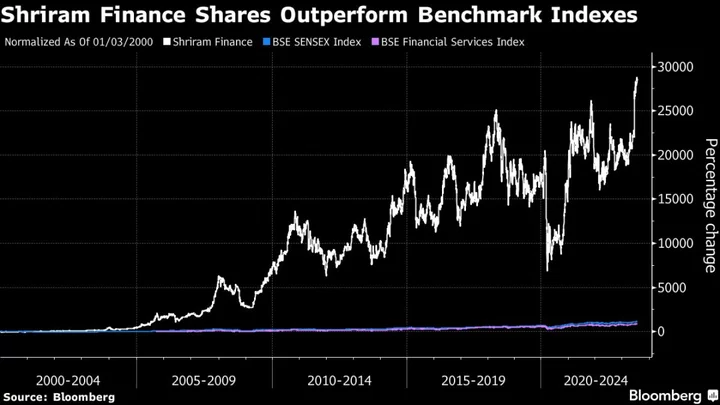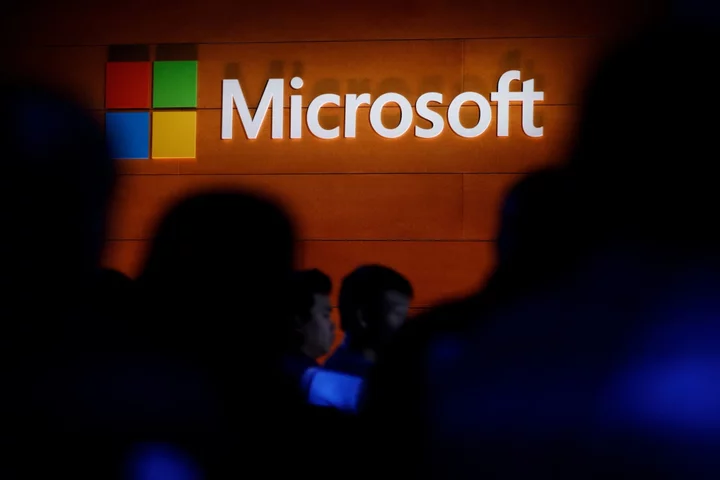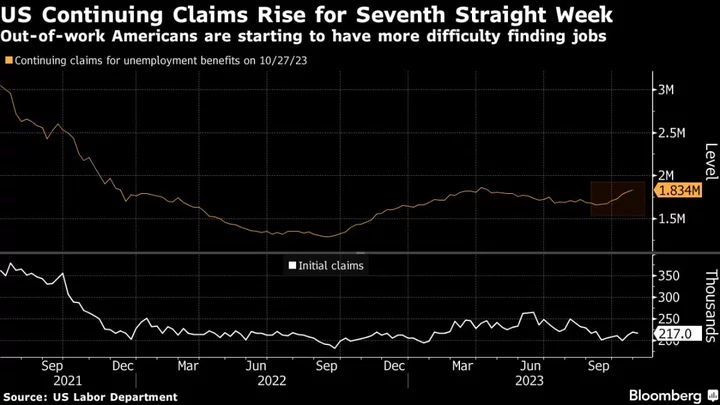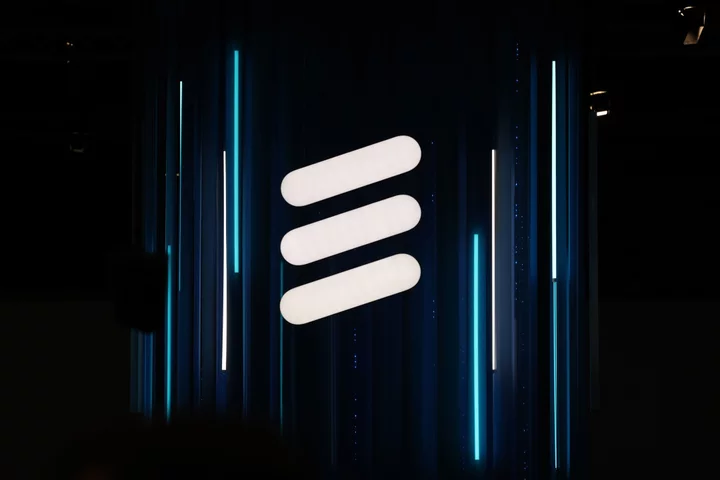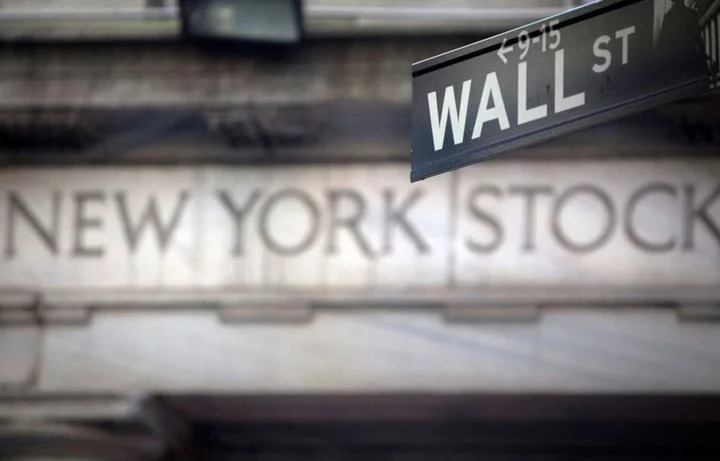On buses and auto-rickshaws, sidewalks and bridges, billboards and market walls: It’s hard to go long in New Delhi these days without seeing the face of Indian Prime Minister Narendra Modi.
The deluge of advertising is part of a marketing blitz to greet nearly 30 world leaders descending on India’s capital this week for the Group of 20 summit. For Modi, it also serves as the unofficial start to the campaign for next year’s election, at which he’s expected to extend his decade in power.
The most obvious clue is in the G-20 logo itself, which contains a lotus flower similar to the symbol of Modi’s ruling Bharatiya Janata Party, which has won outright majorities in the last two national elections for the first time since the 1980s. The BJP currently appears on track to repeat that performance, with an India Today survey showing 52% of the respondents favored Modi as prime minister.
Modi has “tried to identify himself personally with India’s foreign policy and to somehow showcase that he has achieved great things,” said Sushant Singh, a senior fellow at the Centre for Policy Research and guest lecturer at Yale University. “You make people feel good about their leader and say ‘Look what this guy has done for the country, which nobody has been able to do earlier.’”
More than two dozen opposition parties have united in recent months in a bid to dethrone him, potentially representing one of the biggest challenges yet to his rule if they can avoid splitting the anti-Modi vote. The new alliance is aiming to build momentum by blaming his government for inflation that has surged to a 15-month high and the worst religious violence in at least three years.
An India Today survey released last month had some good news for the opposition alliance, showing that it would collectively secure 41% of total votes, compared with 43% for Modi’s BJP and coalition partners.
However, the survey also indicated the BJP was likely to win a majority for a third straight national election – a feat last accomplished in 1971 by the Congress party under Indira Gandhi, Rahul’s grandmother.
Since taking power in 2014, Modi has used highly personalized campaigns to win elections. With rousing campaign speeches, the son of a tea seller has persistently railed against dynastic politics and India’s intellectual elite while ensuring the masses have cheap access to basics like cooking gas, electricity and toilets.
He has also shifted India far to the right with measures aimed at ensuring the BJP wins the Hindu vote – a group that makes up 80% of the population. That has involved both pushing for Hindu nationalist policies such as a citizenship law based on religion while also appearing to tolerate discrimination and violence against Muslims and other minorities, undermining India’s secular traditions and stoking international criticism of its human-rights record.
Within India, so far that has proved a winning strategy for Modi. And in hosting the G-20, the prime minister is showcasing his efforts to bolster India’s international influence along with symbolism that sends a clear political message to voters.
The G-20 theme “One Earth, One Family, One Future” stems from a phrase in Sanskrit, an ancient language associated with Hinduism, and Modi has also touted the benefits of yoga and Ayurvedic medicine. He insisted that events were held throughout the country, ensuring as many people as possible saw the lotus flower on the G-20 logo.
Modi has also sought to make progress on global issues like climate change, supply chain constraints, the Global South and equitable development, said Vijay Chauthaiwale, a senior BJP leader who helps deal with foreign affairs.
“It is India’s agenda,” he said. “Fortunately, Mr. Modi is leading that.”
The G-20 has nothing to do with the BJP’s political agenda, even though “one thing may impact the other, said Vinay Sahasrabuddhe, a senior party leader and president of the Indian Council for Cultural Relations.
Besides, he added, Indians live for more than just bread in their stomachs:. They also want dignity. “When I see that my country has made it to moon, it motivates me,” Sahasrabuddhe said. “It mitigates all the hardships that I go through.”
As Modi gets his moment in the bright lights, the opposition is being careful not to upstage him — in part due to concerns it may backfire. His critics have repeatedly tried and largely failed to counter Modi’s image as a global leader.
“It doesn’t serve the purpose to wreck somebody’s image-making exercise when foreigners are coming here,” said Salman Khurshid, a former foreign minister with the Congress party. Still, he added, the party will continue “to let India know what the truth is.”

